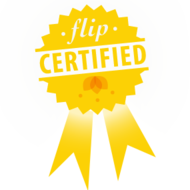Each year, the first order of business in sixth grade science is to cover plate tectonics. This is one of the most difficult and abstract concepts that we cover all year, and it falls in the very first two weeks of their middle school transition.
In order to demonstrate how scientists were able to piece together Pangaea, we begin by examining the current map of the world. The earliest conjecture about the existence of a 200+ million-year-old subcontinent was probably German meteorologist Alfred Wegener, and his first clue was the puzzle-like fit of the continents together.
As a quick activity after students have read and taken notes about continental drift, they cut a map into continent puzzle pieces and explore how neatly they fit together. Eurasia has significantly changed in size and shape since the time of Pangaea, so we emphasize how neatly the eastern coast of South America and the western coast fit together, as well as how neatly the east coast of the United States fits with the northwestern coast of Africa.
Wegener also had a few more clues about how the continents may have been connected. Students read about the fossils of the pre-dinosaur reptile Mesosaurus and that those fossils were found in both South America and Africa, leading Wegener to hypothesize that these continents must have been connected at one time. When Mesosaurus roamed the earth, they populated a large region of Pangaea that is now separated onto two continents.
As a meteorologist, he was also interested in climate-related evidence. Fossils of warm-weather plants have been discovered as far north as the Arctic island of Spitsbergen. Again, this suggests that islands like Spitsbergen have changed their location and when they were connected to another continent, they were in a warmer climate.
In order to model this concepts, the students use a large piece of construction paper and cut it into an irregularly shaped "supercontinent" of their own design. Then the students glue populations of fossils onto the continent. Finally, students cut their supercontinent into several smaller, irregularly shaped continents. They were instructed to make sure to cut their continents in such a way that at least a few boundaries cut through the populations of Mesosaurus, Glossopteris, glacial remains and the other fossils provided.
The following day, I switched up the puzzles and gave each group a mystery supercontinent that was created by another group. Students had to rebuild the supercontinent based on the same clues that Wegener used - the puzzle-like fit of the continents and the fossil remains of species.
Below are some images of the students' supercontinents:
The students really enjoyed this project and showed a must stronger grasp of the concepts as a result. Next time, we tackle the much messier project to demonstrate seafloor spreading!
Subscribe to:
Post Comments (Atom)











0 comments:
Post a Comment